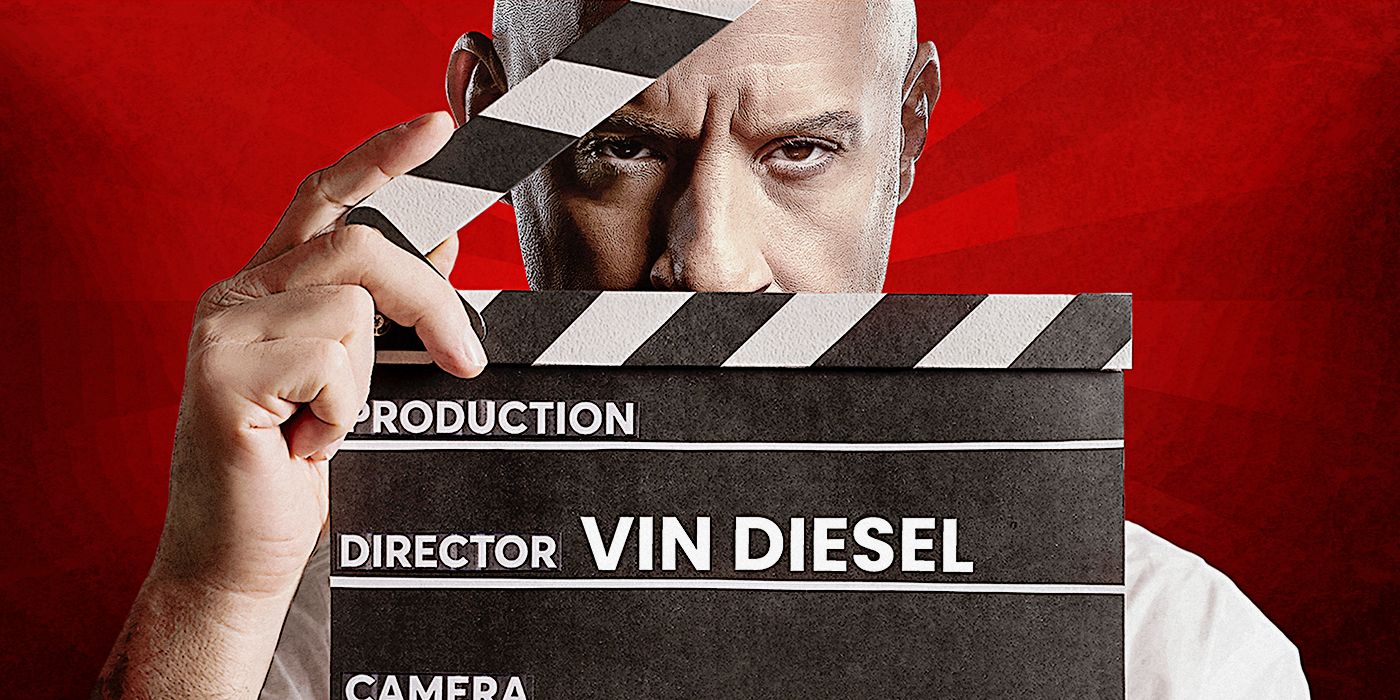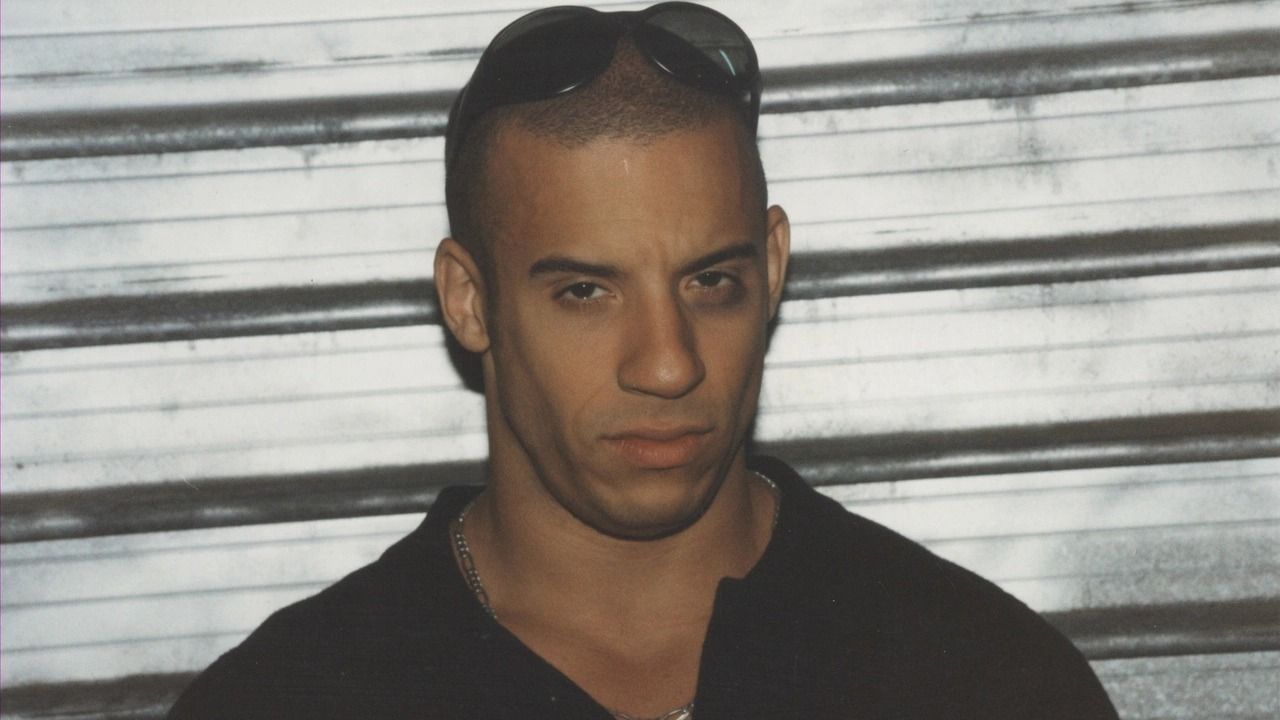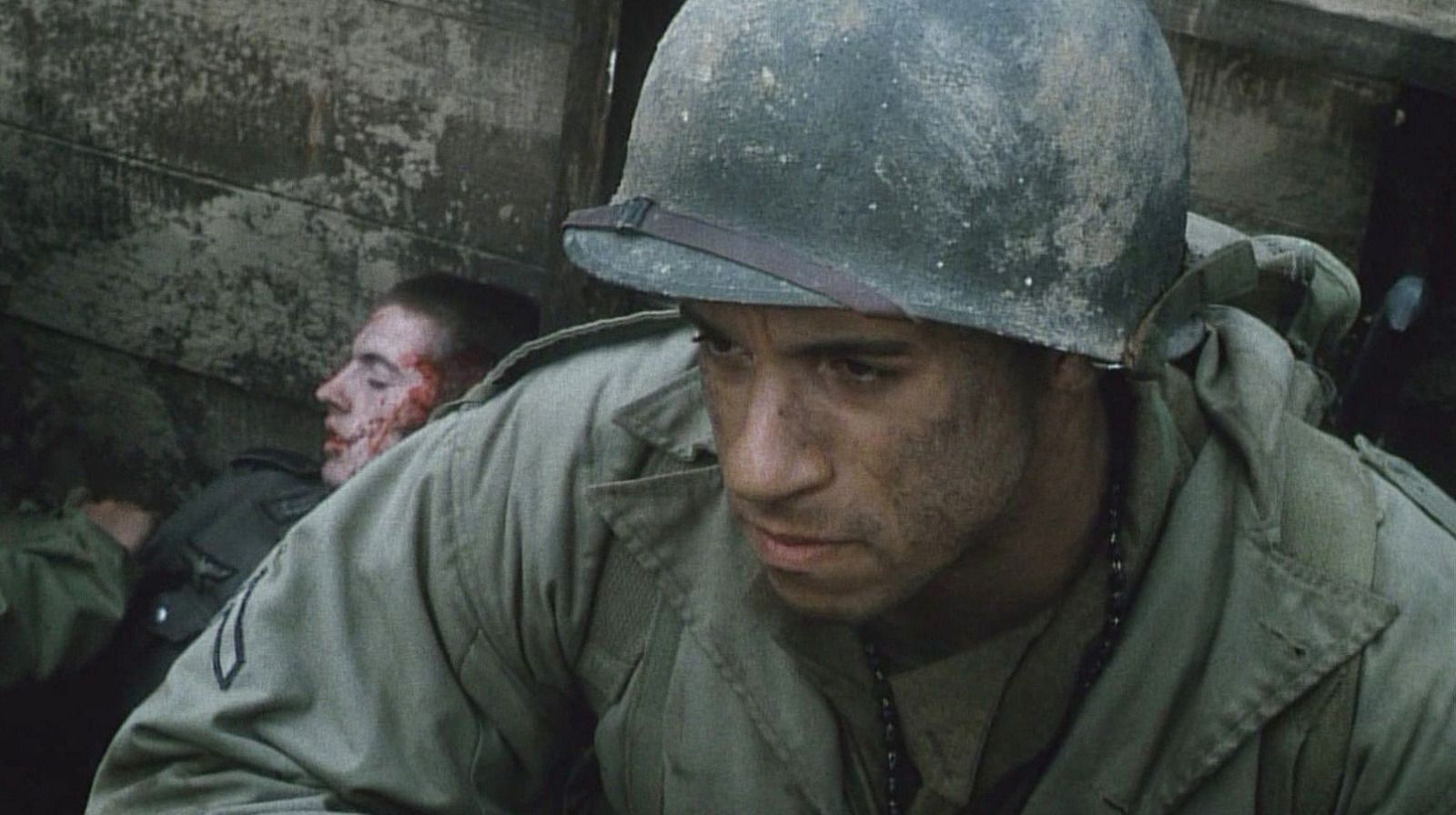Vin Diesel is one of the most recognizable names in the action genre, but there was a time when his career was primed to take a different direction. Long before Fast & Furious and The Chronicles of Riddick had solidified his persona as a tough-as-nails hardman who you’re never quite sure is in on the joke or not, Diesel was just another wannabe actor in a sea of thousands, struggling his way from one audition to the next while dreaming dreams of that illusive Hollywood lifestyle. He first tasted success in 1990 thanks to an uncredited cameo in Awakenings, but despite the film’s high profile which included a Best Picture nomination at the 63rd Academy Awards, it failed to do much for a young Vin Diesel. After five years, it remained his only acting role, and there was little to indicate this was going to change. When it became obvious that more opportunities were not forthcoming, Diesel decided to take the initiative and create them himself.
The result was Multi-Facial and Strays, a 1995 short film and 1997 feature film, respectively, that marked his debuts as a lead actor… and also as a director, producer, writer, and – in the case of Multi-Facial – composer (talk about taking matters into your own hands). Development on the films began in 1995 when, after years of disillusion in Los Angeles, he was forced back to his childhood home of New York City. Once there, his mother gifted him a copy of Rick Schmidt’s self-help book Feature Films at Used Car Prices, the Bible of indie filmmaking that has influenced everyone from Kevin Smith to Eduardo Sánchez. Reinvigorated by a healthy dose of self-confidence, Diesel set about writing the script for Strays, a semi-autobiographical drama that would finally make his dream a reality. There was just one problem: money. Strays might have been as bare-bones as a film can get, but even that carries a bigger price tag than what a former telemarketer can reasonably cover without city grants or third-party support (neither of which were making their presence known). Almost as soon as his passion was reignited, it was gone… at least until he conceived a way to weaponize this constraint.
'Multi-Facial' Was Inspired by Diesel’s Difficulties Becoming an Actor
And thus, Multi-Facial was born. Shot in just a few days on a budget of $3,000, this twenty-one-minute short is an excellent example of why money should never be a barrier to an engrossing story. The film follows Mike (Diesel), a wannabe actor struggling his way from one audition to the next while dreaming dreams of that elusive Hollywood lifestyle. (Sound familiar?) The film makes no attempt to hide that it’s a glorified way for Diesel to vent about the state of his career, but this is by no means a complaint. Instead, this factual basis allows Multi-Facial to become a compelling insight into the cutthroat world of show business that will be sadly relatable for many of its viewers. It’s interesting stuff, and the matter-of-fact way that Diesel presents it (wisely avoiding the trap of using his debut as a vain attempt to flaunt his technical prowess) ensures the focus is kept squarely on what matters: the actors.
The cynical nature of Multi-Facial must have made it feel like a detox weekend for everyone involved, but it’s Diesel who’s the most elated to be here. It’s clear that those years of rejection had a significant impact on his self-image, and seeing him being given the opportunity to unveil these feelings (even if he had to create it himself) results in a surprisingly moving performance. Mike – much like the actor playing him – is mixed race, meaning that he struggles to find work in an industry that relies heavily on typecasting. Such roles are the only ones he can get easily, but to him, they held no interest. He wants better, to be picked for who he is, not for the racial stereotype a casting director wants him to masquerade as. Mike’s closing monologue – still the greatest testament to Diesel’s skills as a dramatic performer – cuts to the heart of this, as he recounts his father’s wish for him to be an actor, not just a Black actor. The people watching are moved to tears by his honesty… but they’re still looking for someone with dreadlocks, leaving Mike on the eternal road to the next failed audition. Multi-Facial ends on a depressing note, but considering Diesel’s eventual success, it’s rather profound in retrospect.
In what must have been a surprise for the inexperienced director, Multi-Facial was a modest hit on the festival circuit. A successful premiere at the Anthology Film Archives in Manhattan led to it being accepted for the 1995 Cannes Film Festival, and while it failed to win any awards, even being included at such a prestigious event was a victory for Diesel. Guided by the knowledge that his Hollywood dream was no longer an impossibility, he returned to Los Angeles to continue work on Strays. He spent his days alternating between his resumed job as a telemarketer and handing out VHS copies of Multi-Facial to anyone who would take it (which included Morgan Freeman following a chance encounter at the Four Seasons hotel). It took months, but eventually he raised the required $50,000 to make Strays, and shortly afterward he found himself back in his hometown once again. Not because the notion of making such an ambitious project had bested his good intentions, but because there was nowhere else where he could realize such a personal endeavor.
'Strays' Is an Exciting Feature-Film Debut
Strays is a classic example of a low-budget indie film. Long before directors had access to a whole swath of technology that would make even a high-concept premise a viable foundation for a debut, people had to make do with what they had. This feeling of homebrewed movie-making is all over Strays. The film tells the story of Rick (Diesel), a man wandering through life with little motivation except to keep filling his emptiness with another night of meaningless sex and drinking. However, all of this changes upon meeting Heather (Suzanne Lanza), his next-door neighbor whose purposeful and loving aura represents the antithesis of everything his world has come to represent. The two hit it off, but Rick’s volatile nature – prodded along by his three best friends who have each made a lifelong vow to the vacuous lifestyle – drives a wedge between their relationship, setting the stage for a downbeat story about the legacy of our mistakes (while still making time to sprinkle in some much-needed optimism).
It's a simple premise – one that largely takes place in a growing assortment of mundane apartments and corridors – but as a showcase for Diesel to announce his hidden talents, it’s more than adequate. Once again, strong writing and a heartfelt central performance remain the film’s greatest asset, but this praise now extends to everyone else too. The interactions between Rick and his cohorts are a particular standout, full of kinetic energy and playful dialogue that bounces off the scenery with ease. The participants in these conversations are an intriguing bunch, as they are rarely likable, but always amusing. Diesel displays a clear talent for slice-of-life realism with these scenes, and one can’t help but wonder why he didn’t embrace this as his career went on. Strays isn’t perfect. The lack of stylistic flair does result in an often grab visual experience, and there are multiple times when poor framing cuts off characters even while they’re talking (resulting in plot-important dialogue being spoken by one-third of a head), but these are not obstructive enough to weaken the narrative. Debut films are rarely elegant, and the compelling drama that forms the emotional core of Strays is more than sufficient to overcome these weaknesses.
The Success Caught the Attention of Steven Spielberg (And the Rest Is History)
It’s always a daunting prospect when you release a work of art publicly. For Diesel, it must have been even more terrifying given the personal nature of Multi-Facial and Strays, but those fears vanished the second he received a phone call from one of cinema’s most revered figures: Steven Spielberg. The acclaimed director had first taken note of Diesel after being impressed by his performance in Multi-Facial, and later had a role in his latest masterpiece, Saving Private Ryan, written specifically for him. Diesel met with Spielberg on the set of Amistad to discuss the film, and soon after he was on a flight to England for an intense World War II-inspired boot camp to prepare him for the most grueling period of his career. Although his screentime was limited, Private Adrian Caparzo was the breakout role Diesel had been hoping for, starting him on the path to international fame. Within a few years, he had asserted himself as a leading action star – and with it, all suggested that he would ever return to his humble origins.
In the twenty-six years since the release of Strays, Diesel has only directed once for the Fast & Furious short film Los Bandoleros, a largely forgettable affair that feels closer to an elongated trailer than a fully developed project. Given how lucrative his refocus as an actor-producer has been under his production company One Race Films – not to mention his desire to appear in almost exclusively tentpole films – it’s doubtful that he has any desire to direct again, or that his post-Pitch Black fans would even want him to. But this is an absence that has not gone unnoticed, with Spielberg being the chief proponent to get Diesel back in the directing chair. During a recent interaction between the two, Spielberg told Diesel that “when I wrote the role for you in Saving Private Ryan… I was also secretly championing the director in you”, adding that it was a “crime of cinema” that he hadn’t directed more. Time will tell if Diesel listens to his words, but hopefully he will. Multi-Facial and Strays aren’t without flaws, but the amount of genuine passion Diesel imbues them with is enough to overcome any technical mishaps. As a snapshot of a young artist before his reinvention as a global superstar, they’re fascinating to watch.



